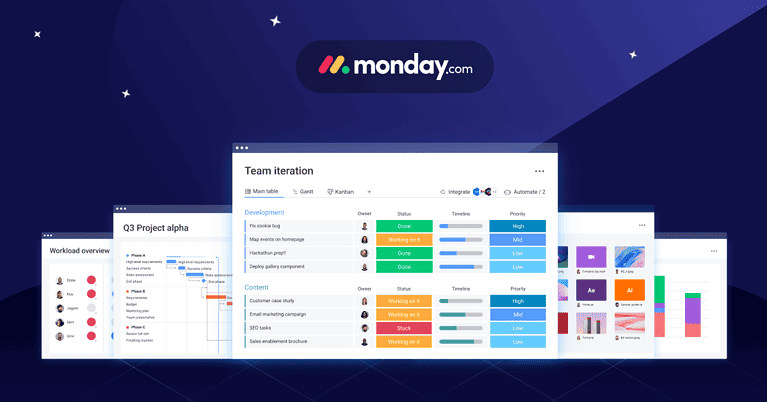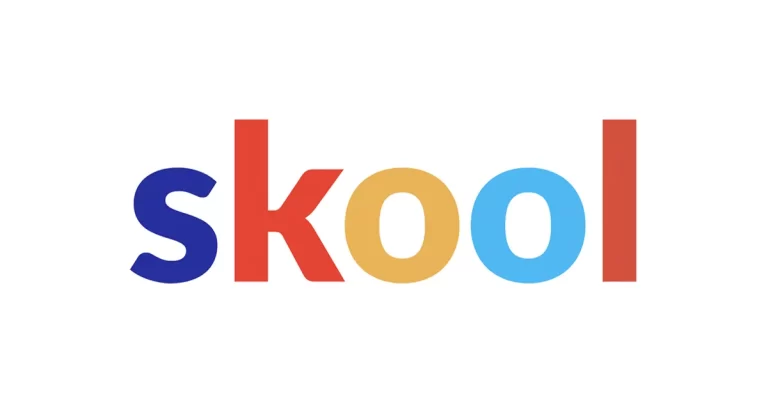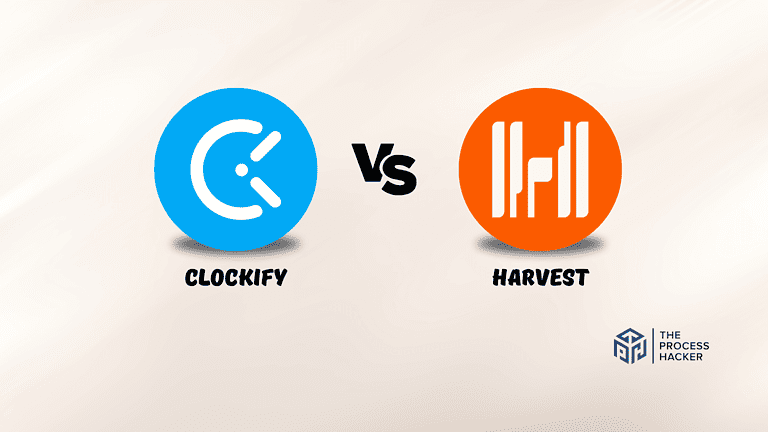How To Write a Project Proposal
Have you ever felt the overwhelming pressure of compiling a project proposal for a potential client, investor, or grant application?
As an entrepreneur, crafting a compelling and persuasive project proposal is often the key to securing new opportunities and growing your business. But fear not because this blog post will break down the essential elements of a successful project proposal and provide expert tips and strategies to help you write one that stands out from the rest.
Whether you’re a seasoned pro or a newcomer to project proposals, this guide will give you the tools to showcase your ideas, confidently secure clients, and secure the funding you need to take your business to the next level.
So, let’s master the art of writing a project proposal like a boss.
What is a Project Proposal?
A project proposal is a detailed plan that outlines the project’s intended path. It serves as a roadmap, detailing what needs to be accomplished, how it will be done, who will be involved, and why the project is valuable.
This document is crucial for gaining approval from stakeholders or securing funding, as it demonstrates the feasibility and importance of your project. Understanding this foundational tool ensures we’re aligned on the basics before diving deeper into crafting an effective project proposal.
Why You Need to Write Solid Project Proposals
Ever had a fantastic idea but struggled to get the support you needed to make it happen? A well-crafted project proposal is the key to making your vision a reality. This short list of the three most important things to write a solid project proposal can help you:
- Secure funding: Convince investors or grant-giving organizations to back your idea.
- Gain internal support: Get buy-in from your company’s leadership.
- Set clear expectations: Ensure everyone involved understands goals, timelines, and responsibilities.
Imagine having the resources and support to transform your ideas into successful projects. A powerful project proposal can help you make that happen. Let’s explore the steps to create one!
How to Write Project Proposal
Creating a project proposal allows you to outline your vision and communicate the necessary steps to bring your idea to life. It’s essential to capture the essence of your project while also persuading stakeholders of its value and feasibility.
As you transition into the full tutorial, remember that each part of your project proposal is crucial in guiding and convincing your audience. By following these steps, you’ll be well-prepared to create a comprehensive, persuasive document that stands out.
Here’s a step-by-step guide on how to write a solid project proposal:
#1) Identify What to Propose
Before you start writing, you need crystal-clear clarity on the “why” behind your project proposal. What problem are you solving? What improvement or change do you want to see? Here are key questions to guide you:
- What’s the issue you want to address? Be specific!
- Why does this matter? Explain the impact of the problem if it remains unsolved.
- What positive change will your project bring about? Describe the ideal outcome.
Having a sharply defined purpose will give your entire project proposal focus and direction.
#2) Define the Project Proposal Scope
Think of your project scope as the boundaries of your project. It’s where you get super clear about what you will and won’t be doing. This helps prevent misunderstandings and keeps your project on track. To define your scope, consider:
- Specific Goals: What do you want to achieve with this project proposal?
- Deliverables: What will you produce (reports, products, events, etc.)?
- Boundaries: What tasks or activities are outside the scope of this project?
A well-defined scope sets realistic expectations for everyone involved, making for a smoother project proposal journey.
#3) Conduct Through Research
A strong supplemental project proposal isn’t based on guesswork – it’s backed by solid research. Here’s what you need to dig into:
| Information to Target | Why It Matters | Technique |
| Target Audience: Who are you trying to reach or impact with your project? | Understanding their needs ensures your solution truly addresses their problems. | Interviews, surveys, focus groups, market research |
| Resources Needed: What will you need to make this happen (budget, project team, equipment, etc.)? | Accurately outlining resources prevents costly surprises. | Budgeting tools, resource allocation models, historical data analysis |
| Potential Challenges: What obstacles might you face? | Anticipating roadblocks allows you to plan and mitigate risks. | Risk assessment tools (e.g., SWOT analysis), brainstorming sessions, expert consultations |
| Projected Outcomes: What measurable results do you expect? | Clearly defined goals help you track progress and demonstrate success. | SMART goals, KPIs (Key Performance Indicators), benchmarking |
#4) Develop a Project Timeline
A clear timeline shows you’re organized and capable of managing your project effectively.
Here’s how to create one:
- Break it Down: Divide your project into smaller, manageable tasks.
- Estimate Time: Determine how long you realistically think each task will take.
- Set Milestones: Mark key progress points along the way (e.g., research completed, draft submitted).
- Choose a Visual Tool: Visualize your timeline using a Gantt chart or a simple calendar. Project management tools like ClickUp or Notion will help you and your team identify urgent tasks and prioritize them accordingly. Once you submit your project proposal, they will also help you present your timeline most efficiently.
Sample Timeline:
- Week 1:
- Conduct audience research
- Draft project scope
- Week 2:
- Finalize budget requirements
- Identify potential team members
- Week 3:
- Write a project proposal draft
- Schedule review with stakeholders (milestone)
- Week 4:
- Revise draft based on feedback
- Submit final proposal
With all these, it is always important to remain flexible. Projects and your team’s schedule can change depending on their situations, so be prepared to adjust your timeline as needed.
#5) Write an Executive Summary
Think of your executive summary as the elevator pitch for your project. It’s a short, punchy summary to grab attention and excite decision-makers. Here’s a sample:
Sample Executive Summary
- Problem: [Briefly outline the core issue your project addresses]
- Solution: [Describe your proposed solution in 1-2 sentences]
- Objectives: [List your top 2-3 project goals]
- Impact: [Explain how this project will make a positive difference]
- Request: [Clearly state what you’re asking for – funding, approval, etc.]
Important note: Write your executive summary after you’ve completed the rest of your proposal. This way, you can easily pull the most important points.
#6) Summarize the Client’s Problem or Need
A key component of your project proposal is summarizing the client’s problem or need. This section is critical because it justifies the necessity of your project and sets the stage for proposing your solution.
It’s your opportunity to connect with the decision-making body by demonstrating your understanding of their situation and how your project can help.
Here’s a free project proposal template that you can consider as a model for your proposal:
Client Problem Summary:
Efficiency in Project Management Tools
Project Background:
XYZ Corporation has been experiencing significant challenges in project team and management collaboration. Currently, the company uses SaaS Platform A for project management. However, as the company has grown, this platform has been unable to scale effectively, leading to issues with user interface complexity, limited integration capabilities, and inadequate support for remote team collaboration.
The Need:
To enhance productivity and streamline project management processes, there is a clear need to evaluate SaaS Platform A against SaaS Platform B, which offers advanced features such as:
- Enhanced User Interface: Platform B provides a more intuitive user interface, potentially reducing training time and increasing team members’ adoption rates.
- Better Integration Options: Unlike Platform A, Platform B integrates seamlessly with a broader range of tools that XYZ Corporation already uses, potentially enhancing workflow efficiencies.
- Robust Remote Collaboration Features: As remote work becomes more prevalent, Platform B’s superior collaboration features could better support XYZ Corporation’s distributed teams.
Objective of the Proposal:
This proposal seeks to conduct a detailed comparison of SaaS Platforms A and B, focusing on user experience, integration capabilities, and support for remote collaboration. The goal is to determine which platform better meets XYZ Corporation’s evolving needs, improving overall project management effectiveness and team productivity.
#7) Present your Proposed Solution
After summarizing the client’s problem, it is crucial to present your proposed solution. This section should detail how your proposal directly addresses the needs identified earlier.
Connect each feature of your solution to the problems or gaps you’ve outlined, ensuring the reader understands how your proposal will effectively solve their issues.
Here’s a project proposal example of how you might present a proposed solution within your project proposal:
Proposed Solution:
Advanced SaaS Platform Implementation for XYZ Corporation
Solution Overview:
To address the challenges faced by XYZ Corporation with its current SaaS platform, we propose the adoption of SaaS Platform B. This platform has been specifically chosen for its superior capabilities in handling large-scale project management and remote team collaboration demands. Below, we detail how Platform B will meet XYZ Corporation’s needs:
- Streamlined User Interface: Platform B features a simplified, user-friendly interface that reduces complexity and learning curves. This change is expected to enhance team productivity by 30% as it allows for quicker project setups and updates.
- Comprehensive Integration Capabilities: Unlike the current platform, Platform B offers extensive integration with over 50 other business tools, including CRM systems, financial software, and communication tools. This integration capability ensures a seamless workflow, allowing real-time updates and enhanced data accuracy.
- Enhanced Collaboration Tools: Platform B supports advanced collaboration features such as real-time editing, video conferencing, and project tracking. These tools are designed to support remote teams, making it easier to manage projects across different locations and time zones.
Implementation Plan:
- Phase 1: Setup and Customization – Customize Platform B to fit the specific workflows and processes of XYZ Corporation.
- Phase 2: Integration and Testing – Integrate Platform B with existing tools and conduct comprehensive testing with key teams.
- Phase 3: Training and Deployment – Conduct training sessions for all team members and fully deploy Platform B across the organization.
- Phase 4: Evaluation and Adjustment – Monitor the platform’s performance and make necessary adjustments to optimize its use within the company.
Expected Outcomes:
By implementing Platform B, XYZ Corporation can expect significant improvements in project management software efficiency, team collaboration, and overall workflow integration. These enhancements will reduce project completion times and increase satisfaction among team members.
#8) Outline Your Project Deliverables
This is where you get specific about what your project will produce. Think of deliverables as tangible results that will demonstrate the success of your project.
Here’s a sample of how to effectively outline project deliverables:
Project Deliverables:
Enhanced SaaS Platform Implementation for XYZ Corporation
Deliverable Overview:
This proposal outlines specific, measurable outcomes demonstrating the successful implementation and impact of SaaS Platform B at XYZ Corporation. Each deliverable is designed to address the core challenges identified in the need analysis and contributes directly to achieving the overall project goals.
#1) Customized Platform Configuration:
- Description: Tailor Platform B to align with XYZ Corporation’s specific operational needs and workflows.
- Completion Metric: Customization verified through user feedback and performance metrics indicating a minimum 25% increase in operational efficiency.
#2) Integration with Existing Systems:
- Description: Seamlessly integrate Platform B with existing CRM, financial software, and communication tools.
- Completion Metric: Successful integration demonstrated by error-free data exchange in real-time testing scenarios.
#3) Comprehensive Training Programs:
- Description: Develop and deliver targeted training sessions for all departments to effectively use Platform B.
- Completion Metric: At least 90% of staff achieving proficiency, as measured by post-training assessments.
#4) Ongoing Support and Maintenance:
- Description: Provide a continuation project proposal and regular updates to ensure Platform B operates optimally within XYZ Corporation. It’s like having a renewal project proposal every now and then to make sure everything’s up-to-date.
- Completion Metric: Support response times under 4 hours, with a 95% issue resolution rate on the first contact.
#5) Performance Evaluation Report:
- Description: Conduct a detailed performance evaluation of Platform B after six months of operation to assess impacts on project management and team collaboration.
- Completion Metric: Detailed report showing key performance indicators, including project completion rates, team productivity metrics, and user satisfaction ratings.
Expected Outcomes:
By delivering these specific outcomes, XYZ Corporation will experience a substantial enhancement in project management capabilities, streamlined operations, and improved team collaboration. These improvements will address the current challenges and support the company’s growth and efficiency objectives.
#9) Estimate Your Project Budget
A well-crafted budget shows that you’ve carefully considered the financial aspect of your project. Here’s how to break it down:
- List Your Expenses: Think of every cost associated with your project. This might include:
- Personnel (salaries, wages, contractors)
- Materials and Supplies
- Equipment
- Travel
- Overhead (rent, utilities, etc.)
- Research Project Costs: Get realistic quotes or estimates for each item. Don’t underestimate costs!
- Justify Your Expenses: Explain why each expense is necessary for completing your project.
- Contingency Budget: Include a small buffer (around 10%) for unexpected costs.
Tip: Use a spreadsheet or budgeting software to organize your project budget. This makes it easier to adjust and share with stakeholders.
#10) Describe your Project Background and Qualifications
This is your chance to show why you’re the right person or team to tackle this project. This is the best time to highlight your:
- Relevant Experience: Describe past projects that demonstrate skills similar to those needed for this proposal.
- Education & Training: Mention relevant degrees, certifications, or specialized training you possess.
- Success Stories: Share examples of times you’ve achieved outstanding results on similar projects.
- Team Expertise: If you have a team, emphasize your team member’s unique skills and strengths.
Make sure your qualifications directly relate to the specific needs of your project. This will show that you understand what’s needed for success.
#11) Identify Project Risks
No project is without its potential stumbling blocks. By anticipating risks upfront, you demonstrate to decision-makers that you’re a realistic and prepared project leader. Here’s how to approach this:
- Brainstorm: Think about anything that could delay, derail, or increase the cost of your project. Consider internal factors (team changes, resource shortages) and external factors (weather, market fluctuations).
- Assess: For each risk, consider its likelihood of occurring and its potential impact on your project.
- Plan Your Response: How will you minimize the risk? How will you handle it to keep your project on track if it does occur?
#12) End with Conclusion with Call to Action
Wrapping up your project proposal with a compelling conclusion and a strong call to action is the final, critical step to ensure your proposal doesn’t just end with a whisper but with a decisive path forward. This part of your proposal is where you tie all your points together, reinforcing the importance and urgency of your project.
In your conclusion, briefly summarize the key elements of your proposal. Highlight the issue or opportunity at hand, reiterate your project’s unique solution, and recall the main benefits and deliverables resulting from the project’s successful execution. It’s your last chance to remind everyone why this project matters and what is at stake if action is not taken.
Key Considerations For A Successful Proposed Project Writeup
There are a few key considerations to keep in mind while writing your proposal. These tips will help ensure that your proposal is not only persuasive but also professional and well-structured.
Use a Project Proposal Template
Utilizing a template can streamline the process of drafting your project proposal. It ensures all critical elements are included and presents your ideas in a structured project proposal format.
Start With A Project Proposal Outline
Creating an outline is a vital first step. It helps you organize your thoughts and key points, ensuring nothing important is overlooked.
Proofread and Edit
Ensure that you thoroughly proofread and edit your proposal before submitting it to ensure clarity and professionalism.
Seek Feedback and Input
It’s essential to carefully proofread and edit your solicited project proposal before submitting it. This step ensures that your document is clear, well-organized, and free of errors, reflecting your attention to detail and professionalism.
Take it to the Next Level: Use ChatGPT to Write a Proposal
You can take your proposal writing to the next level by using ChatGPT, a powerful AI tool that can assist you in creating compelling and persuasive content.
#1) Have the Prospect Fill Out A Detailed Survey
Encourage your prospect to complete a comprehensive survey. This gathers all the necessary information about their needs and expectations, setting a solid foundation for your proposal.
#2) Feed the Survey Data Into ChatGPT
After your prospect has filled out the survey, feed their responses into ChatGPT. This will provide a base for generating a cohesive first draft, leveraging the power of AI to kickstart the writing process.
#3) Ask ChatGPT for A Proposal Template
Request a proposal template from ChatGPT based on the survey data. This will help you draft a proposal quickly and ensure all critical elements are covered right from the start.
#3) Customize and Add Details
Use the generated content from ChatGPT as a starting point, but customize and add specific details relevant to your project proposal. This will ensure that your proposal is tailored specifically for your audience.
Alternatives to a Proposal: Keep It Simple Without A Proposal
Sometimes, a traditional project proposal is overkill. If your project is small-scale, internal, or has a low budget, consider these simpler alternatives:
- One-Page Summary: Outline the project’s purpose, goals, timeline, budget, and team on a single page. This is great for quick approvals or when decision-makers are already familiar with your work.
- Presentation or Pitch Deck: Create a slide deck highlighting the key points of your project. This works well if you need to present your idea verbally as well.
- Informal Project Proposal: You can just send an email with this alternative. A well-structured email outlining the essentials might be enough for very small projects, especially if you have a strong relationship with the decision-maker.
- Unsolicited Project Proposal: If you’re approaching a potential funder or partner without a prior request, concise, well-written, unsolicited project proposals can introduce your idea and its potential benefits. This requires extra attention to grabbing attention and demonstrating value quickly.
Remember: Even with simpler formats, the core principles of strong solicited project proposals still apply – clarity, organization, and a focus on the benefits your project will bring.
Final Thoughts on Writing Project Proposals

Writing a solid project proposal may seem daunting at first, but remember – it’s simply a way to showcase the value of your idea and get the support you need to make it a reality. Following our outlined steps, you can craft a proposal that persuades decision-makers and sets your project on the path to success.
Think of your project proposal as your champion. Just as I’ve guided you through this process, let your proposal guide others to understand the potential of your vision.
Now, go forth and write a proposal you can be proud of!






